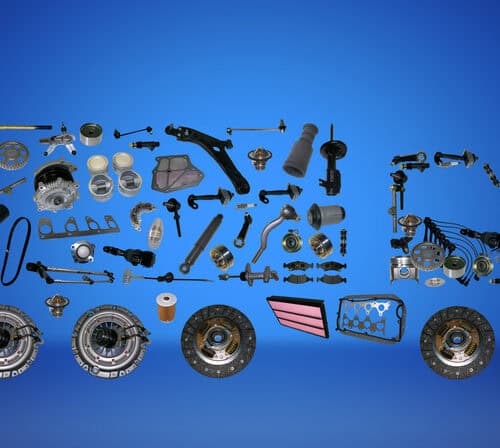Make the Case for Smarter Inventory Planning
Inventory isn’t just an operational necessity; it’s one of the most powerful levers you have to improve financial performance. Yet for many supply chain leaders, convincing the CFO to invest in better planning tools or processes can feel like speaking a different language.
Recently, we hosted an in-depth session with supply chain expert Peter Lijewski to explore how to reframe inventory management as a financial strategy, and how to communicate that value in terms your CFO cares about most.
Here are some highlights from the discussion.
Why Does Inventory Strategy Belong in the C-Suite Conversation?
It’s common for companies to treat inventory as a cost center, something to minimize, manage, and move through the warehouse as efficiently as possible. But as Peter emphasized, this mindset leaves untapped value on the table.
In fact, inventory is often a company’s largest single investment after facilities and labor. Managed well, it fuels growth, enables higher service levels, and unlocks cash for reinvestment. Managed poorly, it drains profit and ties up working capital
Peter shared a powerful example from a company that transformed its entire approach by adopting a simple rule: “If progress couldn’t be measured on the balance sheet, the P&L, or the cash flow statement, it probably wasn’t worth pursuing.”
This mindset shift, viewing inventory through the lens of finance, became the catalyst for real change.
Bridging the Language Gap Between Supply Chain and Finance
One of the most persistent challenges is that supply chain and finance teams simply don’t speak the same language.
Finance focuses on terms like ROI, return on invested capital, accruals, and borrowing costs. Meanwhile, supply chain teams live in the world of lead times, safety stock, order cycles, and service levels.
Peter encouraged attendees to take ownership of translating operational achievements into financial outcomes. As he put it, the language of business is money. When you can show how smarter inventory planning reduces borrowing costs, improves margins, and frees cash for other investments, you make it easier for CFOs to champion your initiatives.
The Real Math Behind Inventory ROI
Throughout the webinar, Peter illustrated why inventory deserves to be treated as an investment rather than an afterthought. He walked through practical examples of how small changes in inventory performance compound into substantial financial gains.
Consider this scenario:
- A $1.5 million inventory investment at a 20% return delivers $300,000 in profit.
- If just 20% of that inventory requires discounting, total returns can drop to $165,000, almost half.
- Improving inventory health and reducing obsolescence can restore those lost dollars.
Peter also demonstrated how better turns, achieved by increasing the number of cycles from five to six, reduce borrowing needs and interest costs while maintaining or improving service levels. Over time, these changes can yield a 71% increase in returns compared to a “safe” investment alternative. These are the kinds of metrics that resonate with finance teams.

The Risk of Overstuffed (or Empty) Wagons
A memorable part of the conversation tackled a common fear: “If we reduce inventory, will we miss sales?”
Peter shared an anecdote about a commercial leader who warned, “You can’t sell from an empty wagon.”
It’s true, but the other side of that equation matters just as much: You also can’t sell what customers don’t want.
The answer isn’t simply to stock more or less. The answer is to get the right mix of products in the right place at the right time. By leveraging technology and disciplined processes to enhance forecasting and replenishment, companies can lower inventory costs while improving service levels, freeing cash without compromising growth.
Service as a Financial Lever
Higher service levels do more than keep customers happy; they directly improve financial performance.
When companies move from, say, 95% service levels to 98%, the impact can be significant. Peter illustrated that in a $3 million business, this seemingly small improvement could generate $90,000 in additional revenue and $18,000 in profit every year.
When you aggregate gains from lower obsolescence, better turns, and improved service, the cumulative effect is hard to ignore.
Why Good Process Still Comes Before Good Technology
As the session wrapped up, Peter offered a note of caution: technology alone doesn’t solve bad processes.
While AI and advanced forecasting can be transformative, simply adding more sophisticated tools to a broken approach will only produce bad results faster.
Sustainable improvement requires a strong process foundation, the right technology to support it, and alignment between supply chain and finance to measure and communicate progress.
Watch the Full Recording
If you’re ready to learn:
- How to calculate the real cost of inventory missteps
- How to quantify ROI in terms your CFO values
- How leading companies are repositioning planning as a profit driver
…you’ll want to catch the full session.
Related Posts


















